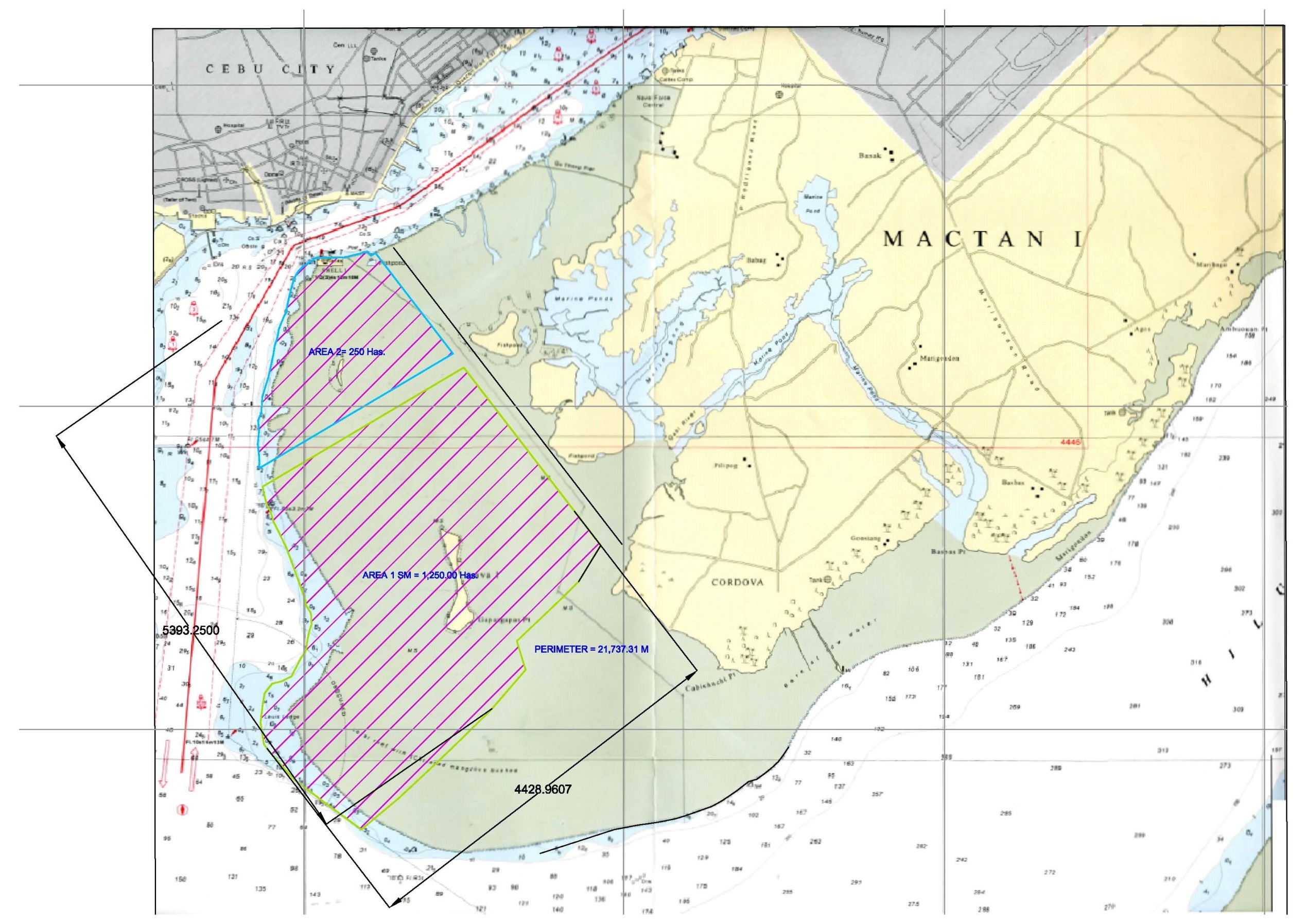Mayor Sitoy hopes to complete documents in 11 months

A map of the 1,500-hectare reclamation project proposed by SM Prime Holdings Inc. as a joint venture with Cordova municipality. It still needs the approval of several government bodies, including an envrionmental impact assessment study.
Cordova Mayor Adelino Sitoy yesterday said work on SM’s proposed reclamation project will not start anytime soon.
But he was confident that all documentary requirements for its approval will be completed in 11 months, or before the end of President Benigno Aquino III’s term next year.
READ: Future Economic Center in Cebu: Two firms ink deal to develop Cordova reclamation area
Sitoy said the P138-billion proposed reclamation project will be his and the Aquino administration’s legacy to Cordova.
“We hope to complete the papers within P-Noy’s term. If we really can’t make it on time, then I guess the start of the project, as far as physical activity is concerned, will have to happen during the term of the new president,” he told Cebu Daily News yesterday.
The municipal government of Cordova has endorsed an unsolicited proposal by property giant SM Prime Holdings, Inc. to reclaim 1,500 hectares of foreshore land, an area about five times bigger than the South Road Properties (SRP) of Cebu City.
An agreement was signed between the municipality and SM on May 13.
READ: Online petition against Cordova reclamation project
The mayor said the agreement will be forwarded to the Cebu Provincial Reclamation Authority, headed by Gov. Hilario Davide III, for endorsement to the Philippine Reclamation Authority (PRA).
SM will undertake a feasibility study once the documents are complete, Sitoy said.
Under the law, a proposed reclamation project would have to be supported by an area clearance, a feasibility study, an environmental impact statement and environment compliance certificate (ECC), and local government resolutions posing no objection to the project, among others.
All reclamation projects, upon acceptance by the PRA Board, will still be subjected to a competitive challenge process.
Eddie Llamedo, spokesman of the Department of Environment of Natural Resources (DENR-7) regional office, said Cordova has yet to apply for an area clearance.
“They cannot proceed without having obtained first an area clearance approved by the DENR secretary,” he told CDN in a text message.
Requirements include clearances to be issued by different government agencies, a sketch plan, endorsement from the Cebu Provincial Board (PB) and certification from affected barangays posing no objection.
Until the town gets the approval of the PRA, it is not authorized to reclaim.
Llamedo added that since a reclamation is an “environmentally critical” project, there has to be a full environmental impact assessment (EIA) for the issuance of an ECC. Approval of the ECC lies with the central office of the Environmental Management Bureau (EMB).
He also said an engineering geological and geo-hazard assessment study as well as a study on the impact or effects over the marine resources in the area are required.
Cordova has about 3,500 hectares of foreshore land and one of the biggest seagrass beds in the country.
Sitoy said they have sought the help of the Biology Department of the University of San Carlos to guide the town in addressing environmental concerns. The project is targeted to be completed in eight years.
SM has also proposed to reclaim 600 hectares along Manila Bay into a central business district.